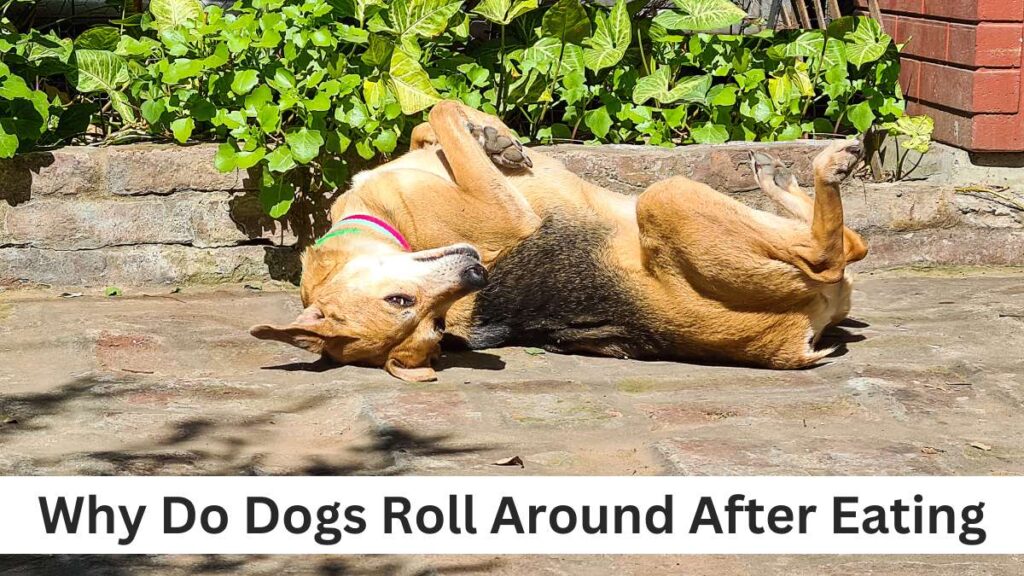Have you ever noticed that after your dog eats, they often turn around and rolls around in circles? It may look cute to humans, but what does your dog’s rolling mean? Is it a sign of happiness or something else entirely? Understanding the behaviour behind when and why dogs roll around can help you better understand not just their current needs but also their needs for ongoing physical health. Why do dogs roll around after eating their food? There’s an interesting history behind this behaviour, which may surprise you.
Contents
What Does Your Dog Rolling Mean?
Historically, rolling dog behaviour can be traced back to when our canine friends were wild animals. In the wild, dogs would roll around in their food to spread its smell and attract other members of their pack or other dog communities. Rolling also served as a way for them to mark their territory. By physically rubbing their scent onto the food source, other animals would know that it was taken and wouldn’t eat it.
Today, Dog rolling is an instinctive behaviour that still serves as a means of communication between your dog and its environment. Dogs may roll around after eating because they are trying to communicate with other pets in the area. They may also mark their turf by transferring scents to objects near them. For example, if your dog rolls in a pile of grass after eating his breakfast, the dog may mark that grass as his own.
Why Do Dogs Roll Around After Eating?
In addition to communication, rolling dog behaviour is also a sign of contentment and pleasure. Dogs may enjoy the tactile sensation of rubbing their fur against different textures when they roll around after eating. The action can also be seen as an expression of enjoyment for your dog, much like how humans often express happiness through clapping or smiling.
Related Post: Exercise Routines for Senior Dogs with Arthritis
How to Understand When a Dog Starts Rolling After Eating?
Knowing when your dog starts rolling after eating cannot be very clear. However, there are a few signs that you can look out for to help determine if they are doing this behaviour out of pleasure or communication. For example, if your dog is only rolling around in certain areas or objects like blankets or grass, it may indicate that the dog is trying to mark his territory. If he enjoys the physical stimulation and always seems happy after rolling around, it’s likely due to pleasure-seeking behaviour.
Overall, Dog rolling is an instinctive behaviour with multiple meanings. Dogs may roll around after eating because they are either marking their territory or expressing pleasure from the texture of the surface they’re rubbing against. So don’t be alarmed if you catch your dog rolling around after eating- it’s just their way of communicating and having fun!
If Dog Didn’t Roll Around Objects After Eating?
If your dog doesn’t roll around after eating, it could mean they don’t enjoy the sensation or feel uncomfortable in their current environment. Ensure your dog is happy and healthy by checking in with them regularly. If an underlying health issue causes discomfort, then consult a veterinarian.
Additionally, you can provide different textures for them to interact with, such as blankets or toys, and encourage them to explore through positive reinforcement. This may help build their confidence and motivate them to engage in rolling behaviour more often.
Conclusion
Dog rolling behaviour is an instinctive behaviour with multiple meanings, signalling communication and pleasure-seeking. Understanding why dogs roll around after eating can benefit owners as they will have a greater understanding of what their dog is trying to tell them and how to best meet their needs.
By providing positive reinforcement, dog owners can help build trust and develop even stronger relationships with their furry friends. So keep an eye on your pup’s behaviours and happy rolling! Why do dogs roll around after eating mean to you? Share in the comments.
